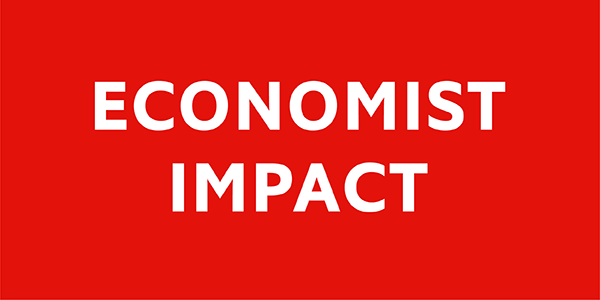Advertisement feature Custom content is written, produced or curated by either a sponsor or by EI Studios, the custom division of Economist Impact. Such placements are clearly labelled as Advertisement, Advertisement feature, Sponsored content, Sponsor perspective, or words to that effect wherever they appear on our website or apps. Neither The Economist news and editorial team, nor Economist Impact’s independent experts, have any involvement in the creation of this content.
Digital wealth under the microscope
As traditional investing shifts to include digital assets like crypto and NFTs, so has the demographic of investors. Amber Group’s managing partner Annabelle Huang highlights the main trends, and how its platform WhaleFin Club is following suit.
Blockchain and crypto aren’t exactly new products. But with the rise of digital currencies, non-fungible tokens (NFTs), and the Metaverse over the past year, there has been a renewed focus on different forms of digital wealth.

Adding to this is the pandemic, which made a “really big difference” in how people act online, says Annabelle Huang, Amber Group’s managing partner, as it gave people a window into living life more digitally, paving the way for greater comfort levels with these innovations. “I think crypto, being a digitally native asset, has benefited a lot from this trend,” she adds.
This is not the only difference Amber Group has registered in how people are investing. When you consider the traditional finance world, and the types of investors in its sphere, you probably have a certain picture in your mind. But the reality is very different for this new wave of digital wealth.
Indicative of its egalitarian, decentralised nature, crypto investors are not restricted by geography. Ms Huang points to Latin America and South-East Asia, particularly the Philippines, as high-growth regions for varying reasons. “Either it’s because they’ve lost faith in their own sovereign fiat currency… or that there are other kinds of elements such as gamification that really popularised crypto in some of these South-East Asian markets.”
Investors are also younger. One survey found that just over half of these generations were using crypto to save for their retirement. Amber Group has noticed the same trend, with many millennials and Gen Z individuals among its top clients.


One feature from the traditional finance world persists, however: the gender disparity. “I think it’s maybe 70% male versus 30% female,” Ms Huang notes. “The lack of female representation is systemic. And that just translates into everything else.”
As a fierce advocate for women entering the crypto industry, Ms Huang “would definitely love to see more women on our own platform.” While she concedes that achieving a parity will take some time, she feels that there is an urgent need to kick-start this transition now with representation and education.
But why is expanding access to women so important in the first place? It’s not just about the wealth-building possibilities, which would correct an already serious inequality—but crypto can also mean freedom. In countries where women are not allowed to have bank accounts, for example, crypto wallets can circumvent these draconian laws.
Aside from the who, there are some intriguing changes happening in the how of digital wealth management. Ms Huang highlights three main trends.


First is the emergence of mobile-first experiences. “A lot of the crypto native platforms are also developing their own app and/or web tools so that investors can easily use these products and have access to crypto.” It’s easy to forget that it wasn’t that long ago that investing in crypto necessitated a fairly high level of technological aptitude, for instance, learning how to join the blockchain.
Next, Ms Huang points to the growing emphasis placed on Environmental, Social, and Governance (ESG), in part due to the recognition of crypto and blockchain’s impact on the environment. Previously, it was incredibly difficult for everyday investors to access, let alone properly understand, carbon credits. But that’s all changing now, and “that makes it so you can really do good while you earn.”


Finally, “over the last year specifically, we’re seeing a lot of the traditional wealth becoming increasingly digital”, Ms Huang comments, with cryptocurrencies and NFTs seeing particular uptake among high-net worth individuals (HNWIs) and family offices. With these changing attitudes, incumbents like Goldman Sachs and JP Morgan are following suit, developing their own digital wealth solutions.
To bridge the gap between these two worlds, Amber Group developed the WhaleFin Club, for HNWIs who have invested over US$5m. Designed to be like a concierge, its staff are available 24/7 for any kind of assistance or assurance the Club members might need in what is still a relatively new financial area.
It also makes education central to its ethos, teaching its clients the ins and outs of crypto as well as providing research materials. “I don’t think there’s any other offering like this in the market. The focus is on bringing the private banking experience to the crypto investors.”
It is still a new world for investors – and one that is constantly transforming. It is also a world that Amber Group has set its sights on opening up, whether through its WhaleFin Club or WhaleFin app, so that its many benefits and possibilities can be fully felt by all kinds of people.


 1
1
 2
2
 3
3
 4
4
 5
5
 6
6
 7
7
 8
8
 9
9
 10
10
 11
11
 12
12
 13
13
 14
14
 15
15
 16
16
 17
17
 18
18
 19
19
 20
20
 21
21

Content from Economist Impact
Whitepaper | Open access: the future of data portability
The importance of data portability for consumers, businesses and societies is growing globally. This report explores the legislative landscape for data portability at present, and examines consumer perceptions regarding data portability and potential data portability models.
Video | Open access: the future of data portability
This video explores the key findings from the programme covering the legislative landscape for data portability at present, and consumer perceptions regarding data portability.
Back to top













